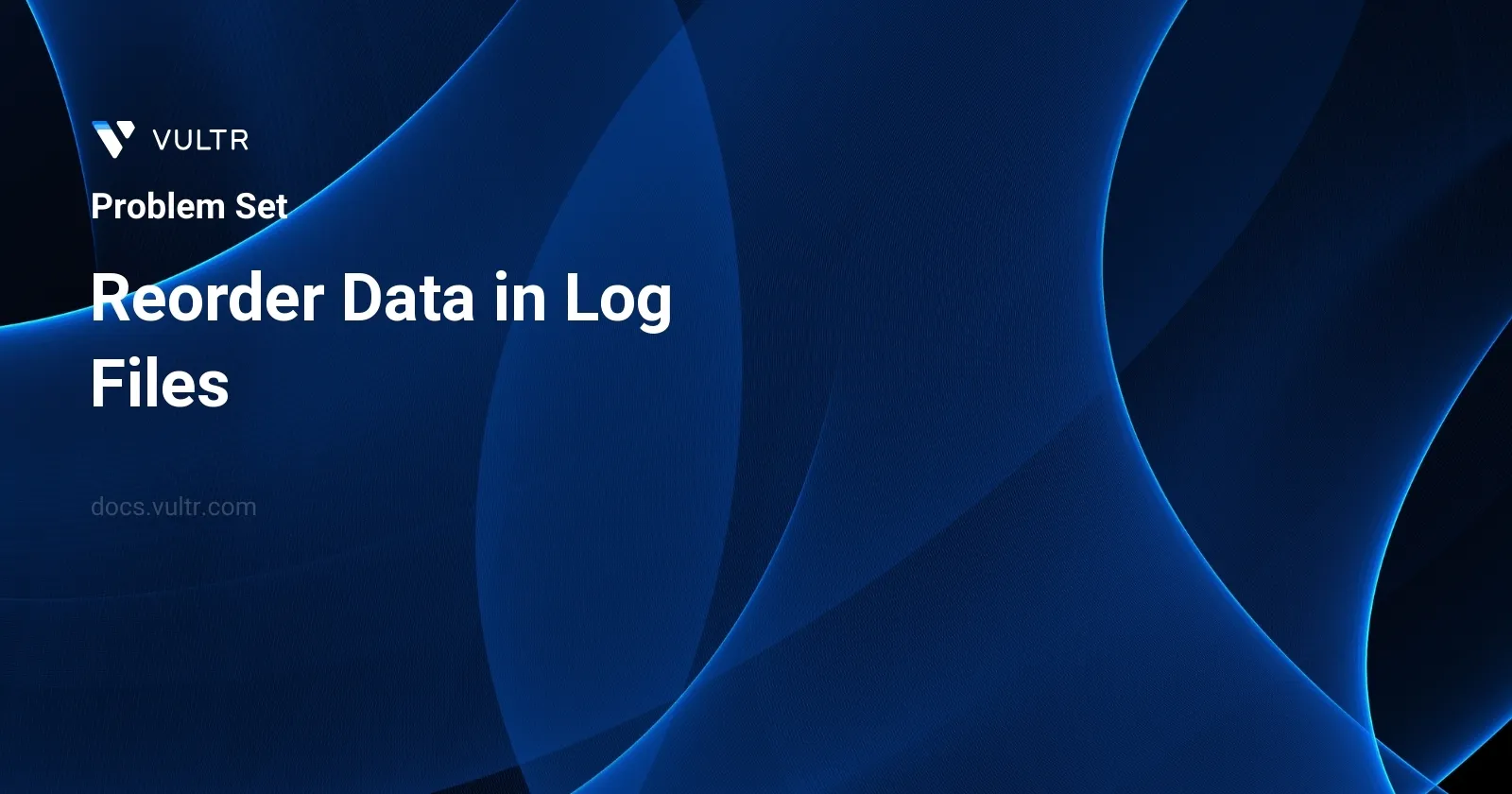
Problem Statement
In this problem, you are provided with an array called logs, each element of which is a space-delimited string representing a log entry. These entries can be categorized into two distinct types: letter-logs and digit-logs. The differentiation between these two types is based on the content following the initial identifier (a unique identifier for each log). If the subsequent words consist only of lowercase English letters, the log is considered a letter-log. Conversely, if they comprise only numeric digits, the log is identified as a digit-log.
The task is to reorder these logs according to specific rules:
- Letter-logs should be positioned before any digit-logs.
- Within the letter-logs, sort them lexicographically based on their content. If the content is identical, then the sort should be based on their identifiers.
- Digit-logs should retain their initial relative order as presented in the input.
Your response should be the overall reordered list according to the above stipulations.
Examples
Example 1
Input:
logs = ["dig1 8 1 5 1","let1 art can","dig2 3 6","let2 own kit dig","let3 art zero"]
Output:
["let1 art can","let3 art zero","let2 own kit dig","dig1 8 1 5 1","dig2 3 6"]
Explanation:
The letter-log contents are all different, so their ordering is "art can", "art zero", "own kit dig". The digit-logs have a relative order of "dig1 8 1 5 1", "dig2 3 6".
Example 2
Input:
logs = ["a1 9 2 3 1","g1 act car","zo4 4 7","ab1 off key dog","a8 act zoo"]
Output:
["g1 act car","a8 act zoo","ab1 off key dog","a1 9 2 3 1","zo4 4 7"]
Constraints
1 <= logs.length <= 1003 <= logs[i].length <= 100- All the tokens of
logs[i]are separated by a single space. logs[i]is guaranteed to have an identifier and at least one word after the identifier.
Approach and Intuition
The solution to reordering the logs involves several steps, informed directly by the constraints and requirements provided:
Classification:
- Traverse through each log in the provided array.
- Determine the type of each log (letter-log or digit-log) by inspecting the first character after the log's identifier (whether it's a digit or a letter).
Sorting Letter-Logs:
- Collect all the letter-logs into a new list.
- Sort this list, first by content, and if there are ties, by their identifiers. This can be achieved by using a sort function with a custom key.
Maintaining Digit-Logs:
- Keep all digit-logs in another list, preserving their original order as no sorting is required for them based on their content or identifier.
Merging Results:
- Merge the sorted letter-logs with the sequence of digit-logs while ensuring that letter-logs appear before the digit-logs.
Given the constraints, this approach should be efficient. Sorting is limited to letter-logs only, facilitating management within the bounds of the problem (up to 100 logs, each up to 100 characters long). This method not only achieves the reordering accurately but also operates within a reasonable computational complexity, mainly influenced by the sorting process.
Solutions
- Python
class Solution:
def reorderLogFiles(self, log_entries: List[str]) -> List[str]:
def sort_criteria(log):
identifier, content = log.split(" ", maxsplit=1)
return (0, content, identifier) if content[0].isalpha() else (1,)
return sorted(log_entries, key=sort_criteria)
You'll reorder log files using the Python3 programming language in this solution. The code efficiently categorizes log files into digit logs and letter logs, ensuring a clear separation and ordering based on specific criteria.
The solution is encapsulated within a class Solution and a method reorderLogFiles, which takes a list of log entries as input. Here’s how it logically structures the reordering:
- Inside the method, a custom function
sort_criteria(log)splits each log intoidentifierandcontentusing a single space as the delimiter. - The tuple returned by
sort_criteria(log)comprises a control element that determines the type of the log (0 for letter logs and 1 for digit logs). This aids in maintaining the grouping whereby all letter logs precede digit logs. - For letter logs, the tuple
(0, content, identifier)ensures sorting is primarily by content, and ties are resolved using the identifier. - For digit logs, the tuple is simply
(1,), ensuring they are placed after all letter logs and remain in their original order.
Finally, the list of log entries is sorted using the Python built-in sorted function, utilizing the sort_criteria to establish order. This handles the placement of letter and digit logs effectively, making the retrieval structured and predictable.